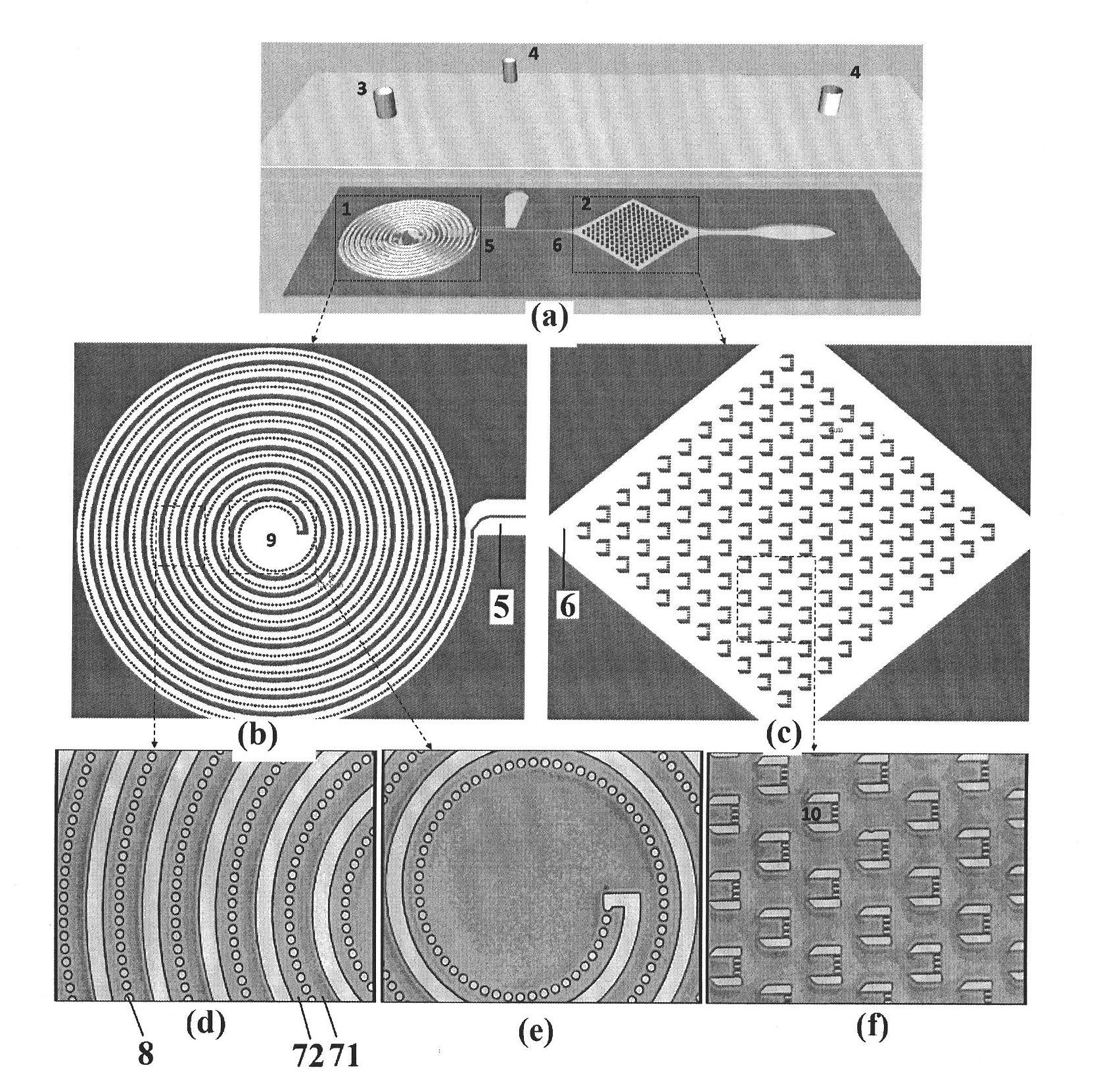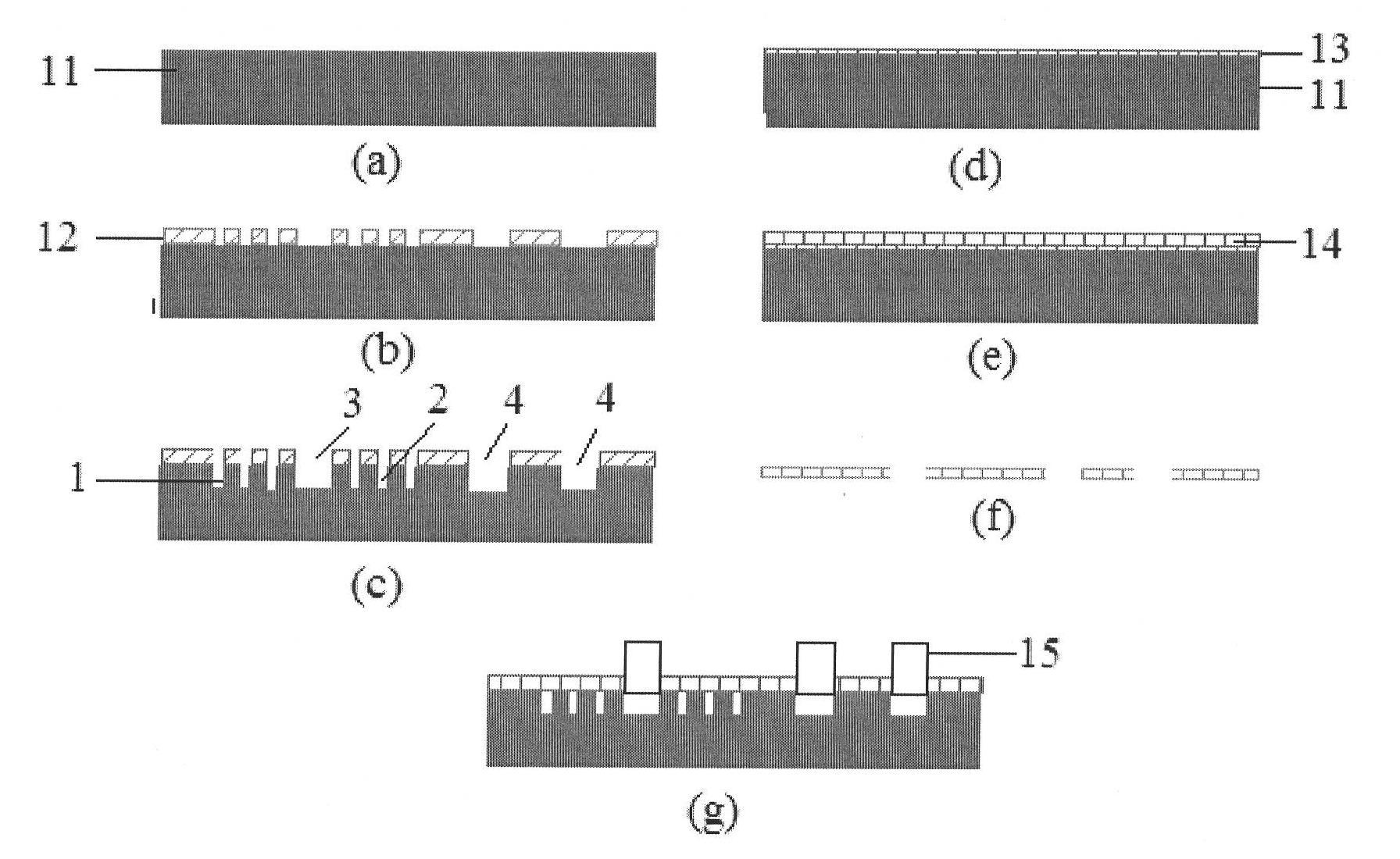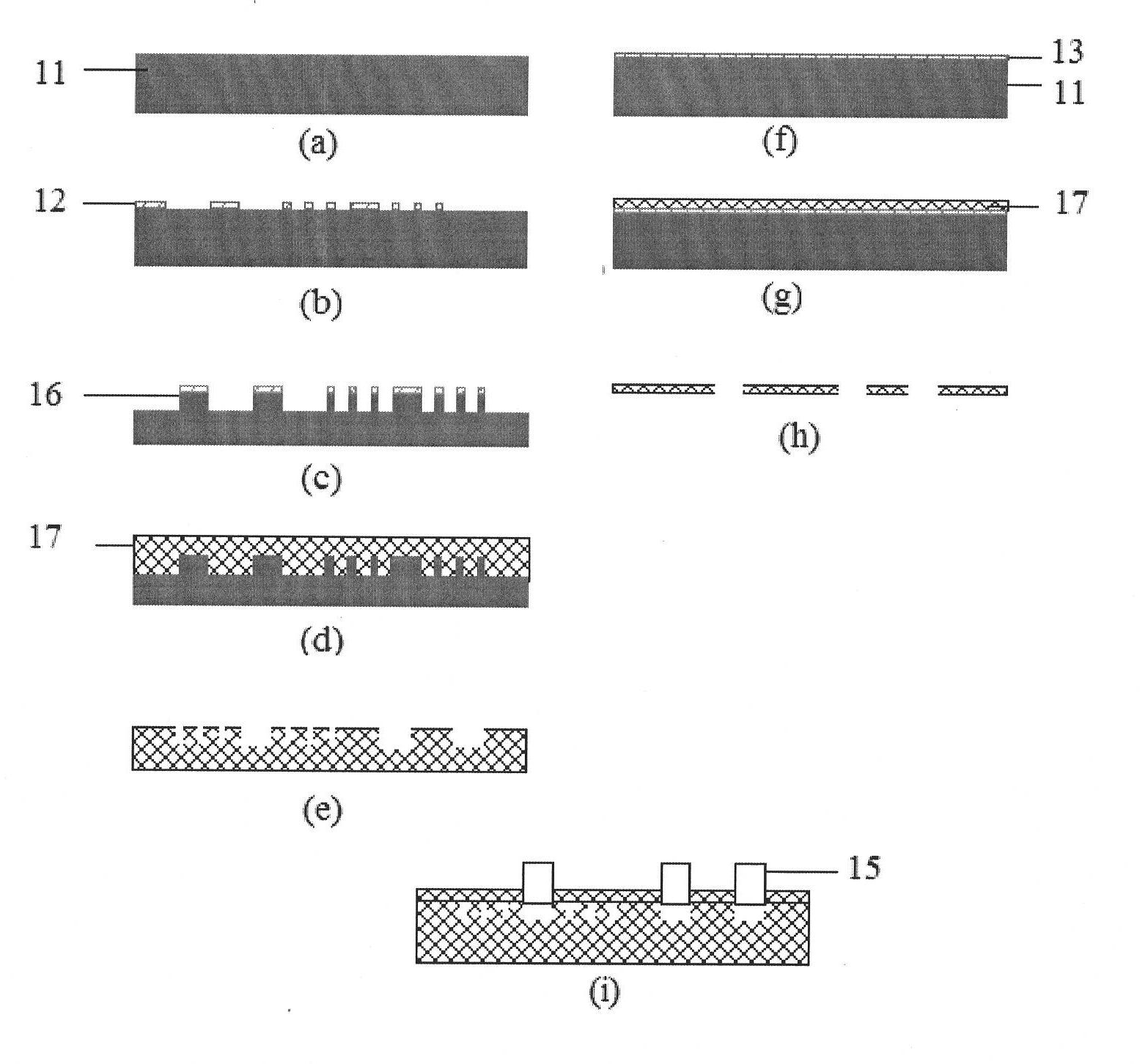Biochip and preparation method thereof
A biochip and silicon wafer technology, applied in the field of microelectromechanical systems and cell biology, can solve the problems of cell function, adverse effects of state, increase the number of digestions, cell damage, etc., to reduce the number of cell digestions, improve separation efficiency, and reduce consumption short time effect
- Summary
- Abstract
- Description
- Claims
- Application Information
AI Technical Summary
Problems solved by technology
Method used
Image
Examples
Embodiment 1
[0080] Embodiment 1: process centrifugal separator and concentrator on silicon chip
[0081] The structure of this embodiment refers to the attached figure 1 , see the appendix for the process flow figure 2 .
[0082] 1) Process flow of the silicon chip structure of the separator and concentrator:
[0083] (a) processing and cleaning the silicon wafer 11;
[0084] (b) Spin glue 12 on the front side of the silicon wafer, pre-baking, photolithography, developing, and post-baking;
[0085] (c) In-depth etching (ICP) of about 100 μm silicon on the front side of the silicon wafer to form a microfluidic channel, a microcolumn array separator 1, a sample inlet 3, an array of concentrators 2, and two sample outlets and sample discharge outlets 4;
[0086] 2) Process flow of cover sheet polymer for separator and concentrator:
[0087] (d) process and clean the silicon wafer 11, and apply a release agent 13 on its surface;
[0088] (e) Pour the bubble-free silicone rubber (PDMS) ...
Embodiment 2
[0091] Example 2: Fabrication of centrifugal separators and concentrators from polymers
[0092] The structure of this embodiment refers to the attached figure 1 , see the appendix for the process flow image 3 .
[0093] 1) Process flow of polymer structure of separator and concentrator:
[0094] (a) processing and cleaning the silicon wafer 11;
[0095] (b) Spin glue 12 on the front side of the silicon wafer, pre-baking, photolithography, developing, and post-baking;
[0096] (c) In-depth etching (ICP) of about 100 μm of silicon on the front side of the silicon wafer to form a mold 16 for microfluidic channels, microcolumn array separators and enricher arrays;
[0097] (d) Treat and clean the silicon structure mold, and apply a release agent on its surface, pour the bubble-free PDMS17 on the silicon structure mold, let it stand for flattening, and then bake it in an oven at 60-100°C About 0.5-1 hour, preferably 60°C, 80°C and 100°C;
[0098] (e) peel off the cured PDMS f...
Embodiment 3
[0104] Example 3: Centrifugal Separator and Concentrator of Sandwich Structure
[0105] The structure of this embodiment refers to the attached figure 2 , see the appendix for the process flow Figure 4 .
[0106] (a) processing and cleaning the silicon wafer 11;
[0107] (b) Spin glue 12 on the front side of the silicon wafer, pre-baking, photolithography, developing, and post-baking;
[0108] (c) In-depth etching (ICP) of about 50 μm of silicon on the front side of the silicon wafer to form a microfluidic channel, a microcolumn array separator, a sample inlet, a concentrator array, and two sample outlets (similar to method 1 in structure);
[0109] (d) the front side of the silicon wafer is anodically bonded to the glass 18;
[0110] (e) Thinning the silicon wafer on the back side of the silicon glass sheet after bonding, the method of dry method, wet method or CMP can be adopted;
[0111] (f) Spin glue on the back of the silicon wafer, pre-baking, photolithography, de...
PUM
 Login to View More
Login to View More Abstract
Description
Claims
Application Information
 Login to View More
Login to View More - R&D
- Intellectual Property
- Life Sciences
- Materials
- Tech Scout
- Unparalleled Data Quality
- Higher Quality Content
- 60% Fewer Hallucinations
Browse by: Latest US Patents, China's latest patents, Technical Efficacy Thesaurus, Application Domain, Technology Topic, Popular Technical Reports.
© 2025 PatSnap. All rights reserved.Legal|Privacy policy|Modern Slavery Act Transparency Statement|Sitemap|About US| Contact US: help@patsnap.com



